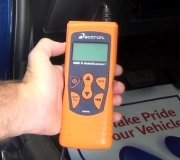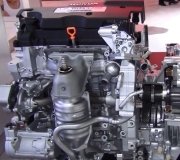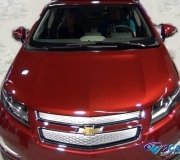You can buy a "crate" engine through the dealer or one of the many suppliers that advertise in the various car and truck magazines. That will be the most expensive engine. I would stay away from a used engine that has a problem like a spun bearing or broken connecting rod. Those are usually accompanied by other things that aren't easy to spot like cracked cylinder walls, oil passages plugged from sludge or metal chips, and things like that.
A tired engine is fine as long as you can run it and it sounds okay. A normal rebuild will take care of that but it can turn expensive unless you do the work yourself. You'll want an engine machine shop to check the cylinder heads for flatness and do a valve job. They'll bore and hone the cylinders to a standard oversize and they can resize the connecting rods and grind the crankshaft journals to a standard undersize if necessary. Usually the journals just need to be polished if there were no spun bearings.
The machine shop can provide the new pistons and other parts too. If you buy them from the shop they will fine tune the cylinder honing to the pistons. If you buy the pistons somewhere else you have to hope the pistons and the cylinders match and that neither was off a fuzz in the machining.
The machine shop may also have a rebuilt engine all ready to go too. Often they keep a few popular ones in stock so mechanics can get their customers' cars back on the road as quickly as possible.
It can be more satisfying to rebuild an engine you already have. If you've never done that before, all GM, Chrysler, and Ford engines from that era are pretty easy to do. You just need the service manual and you'll want to disassemble it yourself so you'll recognize later where everything goes. I like to put bolts back in loosely so I remember where they go. It's also standard procedure to keep the parts organized so they don't get mixed up. You'll want to keep each valve with the mating rocker arm, each rocker arm with the mating push rod, and especially each lifter with it's mating camshaft lobe because those parts develop mating wear patterns. In more complete rebuilds you'll be replacing the camshaft and lifters but you'll still want to keep the other parts matched.
You should stamp numbers in the main bearing caps and connecting rod caps so they don't get mixed up. Sometimes that was already done when the engine was built.
You can also get a lot of tips from an outdated text book that someone is getting rid of. My first engine was a '69 Chrysler 318 c.I. That was given to me by the owner of a very nice Chrysler Dealership that I worked for almost ten years later. After the rebuild it lasted over 90,000 miles before the car rusted apart. I hauled it away last year but I still have the engine.
Monday, June 24th, 2013 AT 9:43 PM




